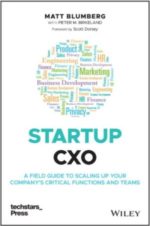How to Negotiate a Term Sheet with a VC, Part II
How to Negotiate a Term Sheet with a VC, Part II
The original posting (probably one of my top two or three in terms of comments and trackbacks) talked about HOW to negotiate a term sheet with a VC. I just received a question from a reader today about WHEN to start looking for VC money. The answer, of course, depends on your stage of business.
The general rule is that the best time to start looking for money is when you don’t need it — but not so early that a potential investor can watch your business closely for too long a period of time before the deal (since all startups have hiccups along the way).
If you’re looking for seed capital, you may not have too many options in terms of timing, but best to do everything you can to keep bootstrapping things along with consulting or one-off projects. Why? At the proof-of-concept stage, the value of your company increases sharply with every new customer or new release, so best not to take capital too early as long as you can live without it.
If you’ve got a business going (say $1-3mm run rate), with a cash balance and a predictable burn rate, and you’ve never taken in institutional capital before, you should probably start talking to VCs 4-6 months before you run out of cash. While you don’t want VCs to anchor a valuation in their mind too early, the reality is that it takes time to get these your first institutional deal done since it usually involves broader changes to corporate documents, and you definitely want to talk to several different firms, so a little more lead time is better. This is especially true if your window of time interferes with August or the holiday season, when not much new business gets done at VCs unless you have a super hot deal.
If you’re looking for expansion capital and are near or at profitability, deals will probably take less time to get done, and valuations are likely to fluctuate less. In these cases, I’d say less lead time is required, although if you’re in a volatile industry, you may need the capital sooner than you think!
But again, the best time to look for money is when you don’t need it. Investors (even the nicest ones) aren’t afraid to "market price" a deal lower if they sense desperation or, more important, a lack of alternatives. To that end, of every piece of advice in the original posting, the most important one, which affects timing, is #3 — get more than one VC interested in your deal!
The Gift of Insight
The Gift of Insight
Jonathan Schwartz has a great post entitled “Every Customer Visit is a Lesson.” It’s so true…if you want to give yourself a gift this holiday season, give yourself the gift of insight and spend some time in the market with a few of your top customers or prospects. I’ve always found that to be one of the most valuable ways to shape the business, both strategically and operationally.
One of the most vivid memories I have to illustrate this concept is a meeting that I had with Crate and Barrel, a prospect, in the very early days of Return Path, back in 2000 or 2001. I went in with my colleague Sophie Miller, and with a number of product sales specialists from our reseller, DoubleClick, for an all-day session with C&B’s online marketing team. We collectively were pitching everything, possibly including the kitchen sink — ad serving through DART, buying online media through the DoubleClick Network, using Abacus to expand the reach of their catalog, sending email through DARTMail, renting email lists through DoubleClick’s email list business, oh yes, and using Return Path’s ECOA service to keep their email database clean.
The meeting was a mess, and as far as I can tell, it didn’t really lead to any meaningful business, either for us or for DoubleClick. I learned two things in this call the hard way, but both were incredibly valuable lessons that continue to shape our business today.
First, we created massive confusion by bringing multiple sales people in to each present a specific product to the customer, rather than sending in one senior, consultative sales person to present a holistic digital marketing solution. Picture yourself as the head of e-commerce for a major retailer, expecting an insightful day with the leading vendor in the space…then walking into the meeting and seeing that vendor’s SEVEN different sales people introducing themselves to each other! It was a mess. Since then, we have tried hard (and I think DoubleClick has as well) to run with a single sales force organized around the customer, not organized around our own products.
Second, we discovered that the original version of our flagship ECOA product (which was still in beta at the time) had a couple of flaws in the business model that were probably going to make it a non-starter in the retail/catalog vertical. We also learned, happily, that the client loved the concept, but there were some details in the original product that had to be fixed if we were ever going to get traction with key customers in that key segment. We fixed these problems and were able to successfully re-launch ECOA later that year, but more important, we now stay much closer to our customers as we develop new products and features so we make sure concepts are more firmly market tested before they head into development.
There are many more examples of this Gift of Insight, which I’ll share in future posts. Happy Holidays!
Holiday Card Anon
Holiday Card Anon
‘Tis the season of the business holiday card. This is a nice enough tradition, but I received two cards this week that baffled me because I couldn’t tell who sent them to me. Really, if you’re going to send out holiday cards, the only requirement is to make sure the recipients know that YOU sent them! And not just by putting your name or company on the envelope (although that’s a help), as sometimes cards get opened and separated from their envelopes. Include a business card inside the card, or make sure your name is printed on the card itself, or make sure your signature is legible, or at the very least make sure your company name is on the inside of the card. Otherwise, all credit for the holiday greeting will just go straight to the North Pole!
The Hiring Challenge
Fred had a great posting a couple weeks back called The Talent Economy. In it, he writes:
The CEOs who survived the downturn with their companies intact proved that they were tenacious, creative, hard nosed, and financially savvy. Now they are waking up to find out that the game has changed. They have to start focusing on the people side of the business a lot more. Hiring, managing, and retaining the talent is back at the top of the priority list.
Retaining good people has always been at the top of my list, even in the dark days. But hiring and managing in an environment that’s once-stagnant-now-growing presents some real challenges. Many of these aren’t unique to startups — it’s always tough to find A players — but there are three things I’ve observed that are uniquely tough about hiring in an entrepreneurial environment:
2. Finding the time to do it right. Most managers in small companies are at least a little overworked (sometimes a lot!). And most cash-sensitive small companies don’t want to hire new people until it’s absolutely necessary, or more specifically, until it was absolutely necessary about a month ago. This mismatch means that by the time the organization has decided to add someone, the hiring manager is even more overworked than usual — and can’t find the time to go through the whole process of job definition, recruiting, interviewing, and training. This is one of the biggest traps I’ve seen startups fall prey to, and the only way to break the cycle is for hiring managers to make the new hire process their #1 priority, recognizing short term pain in the form of less output (prepare your colleagues for this with good communication) in exchange for longer term gains of leverage and increased responsibility.
3. Remembering that the hiring process doesn’t end on the employee’s first day. I always think about the employee’s first day as the mid-point of the hiring process. The things that come after the first day — orientation (where’s the bathroom?), context-setting (here’s our mission, here’s how your job furthers it), specific skill training, goal setting (what’s your 90-day plan?), and a formal check-in 90 days later — are all make-or-break in terms of integrating a new employee into the organization, making sure they’re a good hire, and of course making them as productive as possible.
UPDATE: Joe Kraus has a great post on this topic as well.
Being the Client
My friend and colleague Sophie Miller, a long-time sales executive in the direct marketing industry, once said, "In my next life, I want to come back as a client." She didn’t mean it this way (I think she meant it as "I want to be in the driver’s seat next time ’round"), but this is great advice for any member of an entrepreneurial team in a software or services business that serves other businesses. The good news is, it doesn’t require the afterlife to achieve it!
Mariquita and I have done some work in our spare time the past two years for two different organizations to help them out with their technology. One is our golf course, and the other is our cousins’ wine store upstate. Both experiences have had us defining business requirements, working with vendors from selection through contract, and then working with the vendor and the organization on deployment and process change. Both have been directly useful for me to take lessons back and apply them to our processes and work with clients at Return Path.
Now Selling Wit, Charm…Even Your Own Opinions
Now Selling Wit, Charm…Even Your Own Opinions
Full credit to Jonathan Schwartz from Sun for spotting this gem of an offer on eBay. Come on, people. Please.
The Rumors of Email's Demise Have Been Greatly Exaggerated, Part II
The Rumors of Email’s Demise Have Been Greatly Exaggerated, Part II
Fred beat me to it. There was an interesting article floating around yesterday about how Korea, which is one of the cutting edge nations in terms of technology usage, is finding that younger people prefer electronic communications like SMS text messaging and IM to email. Fred says he sees that trend here in his teenage kids as well.
It will be interesting to see how this develops. It may be over the long haul that more personal communication happens over SMS and IM, but I’m still a believer in email for more formal business communications, any longer form note, and distribution of content or marketing that is best served on a larger screen and in a less intrusive way.
Why Entrepreneurship is Like Windows
Why Entrepreneurship is Like Windows
My family and I had a great and very relaxing Thanksgiving holiday, and I hope you did as well. I always enjoy the four-day weekend — it’s one of the few times during the year where no one (outside of retail) is working, so I always get to relax and take some mental time away from work.
It’s often said that no matter how many hours a day an entrepreneur is in the office, he or she is always working mentally. It occurred to me this past weekend that being an entrepreneur is a lot like Windows in this way:
Usually, at night, you’re in Screen Saver mode. One little jiggle of the mouse, and you’re right back in the game.
If you’re lucky over a weekend, you’ll get to Log Off or even Standby, so going back to work actually requires a few conscious keystrokes. But the Operating System is still ready and waiting in the background.
A good vacation allows you to Hibernate. The hard drive stops spinning, the fan quiets down, and you can close the screen.
While a great vacation (a 2+ weeker) can allow you to actually Shut Down, that’s rare and difficult. I achieved it in Antarctica a couple of years ago, but only because there was no electricity and no reminders of civilization, let alone email marketing. More often, a full Shut Down happens on an exit.
Usually, it’s not until after the exit that you get to Restart and try it all over again, although you might get lucky and do that midstream with a good management team offsite or working with a great executive coach.
And I won’t even get into the Ctrl-Alt-Del shutdown. That’s not pretty.
Everyone’s a Marketer, Part II
Everyone’s a Marketer, Part II
In Part I of this posting, I talked about how everyone’s job function is increasingly touching customers and therefore, in our networked world, everyone needs to think like a marketer. This posting has the same theme but a different spin. From the perspective of the individual person (in a company, and in life), marketing is central to success, although the definition of your target market needs to change with the circumstances.
Interviewing for a job? How good a job have you done building the brand of you (your list of accomplishments)? How good is your collateral (resume)?
Want to get an increase in your department’s budget or buy a new piece of hardware? Have you adequately defined the return on the incremental investment you’re proposing?
Need to get that project done? What’s your universal selling proposition to get others to help you out (“here’s why it’s good for you to cooperate”)? Are there any incentives involved (“I’ll buy dinner if you stay late and help with this”)?
Working hard to get a promotion? Identify a new customer segment, or a new problem to solve for your customers, or a solution to that problem, and your marketing skills will get you there.
Want to go somewhere off the beaten path on vacation? Better come up with some great selling points that resonate with specific members of your family (it’s beautiful, it’s inexpensive, the food is great, no one else has ever been there) to convince them all to go along with you!
I suppose this posting (and maybe the other one as well) could be entitled “Everyone’s in Sales,” and that would also be fitting. Anyone who’s not in marketing or sales but who’s interested in learning a few of the basics should consider some outside reading. I’d recommend Positioning: The Battle for Your Mind, SPIN Selling, and Getting To Yes, but there are many, many other great books that would also do the job.
Complex Collaborations
Complex Collaborations
I just read a new book entitled Business Without Boundaries: An Action Framework for Collaborating Across Time, Distance, Organization, and Culture. I happen to know one of the authors, Don Mankin, who was on our trip to Antarctica last year. The book is a good, quick read for anyone running an organization that requires any degree of complex collaboration, whether in the form of multiple offices with a single company, close relationships with suppliers or customers or channel partners, or even a joint venture.
Mankin and his co-author Susan Cohen present three case studies: John Deere, Radica, and Solectron. They then tie their learnings together into a solid framework that’s almost a how-to checklist for organization leaders to follow. While the writers take an academic approach, the learnings and framework steps presented are anything but academic — they place a huge premium, for example, on relationship building and communication patterns. These are all things we’ve worked through over the years at Return Path, whether managing employees across multiple offices or in working with some of our reseller partners or clients.
All in, it’s a good read — and not just because I hung out with this guy in an igloo for two weeks!
Reverse Engineering Venture Economics
Reverse Engineering Venture Economics
First, they receive a small percentage of their fund as an annual management fee to pay basic operating expenses. These fees range in size, but a typical one is 2% per year. So on the $100 million fund, the GPs will take $2 million per year to pay their salaries, staff, and office expenses.
Second, they receive a percentage of what’s called the carry, or the profits from their investments. Carry percentages have a range as well, but again a typical one is 20%. Here’s where the math starts to get interesting.
Let’s say the GPs invest $4 million in your company at a $12 million pre-money valuation, so they buy 1/4 of the company. You end up selling the company for $40 million a couple years later without taking in additional capital (good for you!), so their 1/4 stake in the company is now worth $10 million. They’ve made a 2.5x return on their invested capital, bringing back a profit of $6 million to their LPs, and they’re entitled to keep 20% of it, or $1.2 million, for themselves.
Fred Wilson talks about the rule of 1/3 in Valuation, where, from a VC’s perspective, 1/3 of deals go really well, 1/3 go sideways (he defines sideways as a 1x-2x return), and 1/3 go badly and they lose most or all of their money.
So based on this rule, let’s say a "good" VC will generate an average return of 2.5x on their LPs’ money over a 5-year period (an IRR of 20%). Now let’s say on average, the GPs make 22 investments of $4 million each to fill out their $100 million fund (less the $10-12 million spent on management fees over the life of the fund), and, again on average, each returns 2.5x (recognizing that many will return zero and a few will return 10x). The VCs will have returned $220 million to their LPs on $100 million invested, for a gain of $120 million (good for them!). The GPs get to keep 20% of that, or $24 million, to split among themselves. Not a bad bonus, on top of their salaries, for 5 years of work across a small number of partners and associates.
Let’s attempt now to compare those earnings to the earnings of an entrepreneur, assuming equal annual cash compensation. An average entrepreneur of a venture-funded company probably owns somewhere between 5-10% of the company by the time the company is sold. In this same average case above, the company is sold for $40 million, so the entrepreneur’s equity will be worth between $2 and $4 million for the same 5 years of work. In this simple case, the GPs in the venture firm have earned a collective $1.2 million, much less on a per-person basis than the entrepreneur. However, in the 5 year period of time where the entrepreneur is working solely on one business, the GPs are working on 25 businesses, earning a collective $30 million. A senior partner in a small firm will end up with $10-12 million. A junior partner maybe more like $2-4 million, comparable to the entrepreneur. However, and this is an important point, most entrepreneurs probably operate at the "seinor partner" level.
So on average, I think the economics probably work out in favor of VCs over entrepreneurs in the long run, mostly because VCs operate a diversified portfolio of companies and entrepreneurs are putting all their eggs in one basket. But on any given deal, I’d rather be the entrepreneur any day of the week – you have more control over value creation, and more of a personal win if things go well. And in the 1/3 of deals that are home runs for the VC, it’s better to be the entrepreneur, since you’re much further along the risk/reward curve and have that chance of seeing your equity turn into $20 million or more in that one shot.



